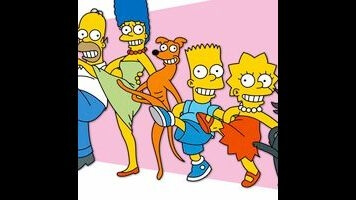The Simpsons: “Moe Goes From Rags To Riches”

With so many episodes down, so many stories told, and so many minor characters given their moment in the limelight, it is a rare event when The Simpsons of today will hit on an idea that seems completely out of left field. This episode, which tells the story of Moe’s dishrag, has such an unconventional premise that it might well have been a surrealist masterpiece. Instead it is the most conventional type of story possible for The Simpsons, being mainly an excuse to drop the cast into various moments of history and capping it all with a treacly message about the power of friendship and the love of dogs. The satire is so tame that it doesn’t even risk offending Vikings, although it mildly slaps the French, who are the national equivalent of airline peanuts in American comedy. In this season, some of the funniest and best episodes have tended to be also the most outlandish, but “Moe Goes From Rags To Riches” is a major exception, with very few good jokes coming out of the wildest premise of the season to date.
The framing device for the episode sets the tone with an unfunny recreation of a Lionel Richie video, for some reason. After a town meeting at Moe’s Tavern (because City Hall is being treated for bedbugs), the characters mock Moe for being best friends with his bar rag. This gives the rag reason to narrate its own life in the plummy tones of Jeremy Irons.
The first act follows the rag through its beginnings as a medieval tapestry that magically predicts the events of its future. Most of the jokes here don’t really go anywhere, which is part of the problem for the episode as a whole. We learn that the tapestry was woven of demon wool that the weaver Marguerite worked on for 25 years (with a 15-minute dejeuner, so: ha), but this proves mostly inconsequential to the rag’s story. The other jokes in this segment mock the inequities of the Middle Ages, the French, and America’s Funniest Home Videos, and most are as stale as these topics suggest.
The second act first puts Nelson and Lisa into the story of One Thousand And One Nights with the rag as part of a tent. The rag is then used in executions in Spain and France before Michelangelo uses it to create the Sistine Chapel. There is very little irony at play in these parts. The best moments of this sequence are Nelson’s vacillations between bored and intrigued yawns during Lisa’s story, and that’s not saying much. In the third part of the rag’s story, it is used to create first a Confederate battle flag and then rag soup during the Great Depression before winding up at the top of Mount Everest as part of a mountaineering expedition. From there, a yeti takes the rag home to his infant son, who is Moe Szyslak. There’s nothing particularly funny about this segment, either.
The final act caps the framing device with Moe finding his now-missing rag at the Simpson house, where he learns that he has real friends. The rag ends up happy in the paws of Santa’s Little Helper, who can give it the purest love it has ever experienced in 1,000 years. Not only is this segment unfunny, but it is lazy, sickly-sweet garbage as aimless as the rest of the episode. Yes, I think dogs are generally awesome. No, I do not need reminding of how innocent their affections are.
In the laugh-free B-plot, Milhouse finally gets sick of Bart’s constant needling and dumps him as a friend. Bart tries to win him back and eventually succeeds by letting Drederick Tatum, the Mike Tyson stand-in of the Simpsons world, punch him in the arm. While it theoretically comments on the idea of Moe’s friendship with his bar rag, that story is really about the rag popping up, Forrest Gump-like, throughout history, and the friendship angle is, even within the confines of the story, a conceit. So the B-plot does not actually comment on the main storyline at all. Moreover, The Simpsons has told this story, where Bart learns A Very Important Lesson About Friendship, so many times before, and this version was remarkably uninspired.
Perhaps the creators of The Simpsons meant this episode to be sweeping and impressive, but it was neither. Nor was it particularly funny. It might have been a satire of historical epic movies about an object with a life of adventure such as The Red Violin, but the satire angle was particularly weak in this episode. If Tim Long, who wrote this episode, was, in fact, satirizing such a movie, it is unclear which one or why The Simpsons would make such an episode now. All in all, this was a rather baffling and disappointing experience that wastes a promising idea.
Stray observations:
- Of all the jokes involving the recreation of a Lionel Richie video, that was one.
- “It felt as if the good times known as the Dark Ages would never end.” Okay, that was pretty good. So was the chastity belt that one of the groupies threw at the tapestry.